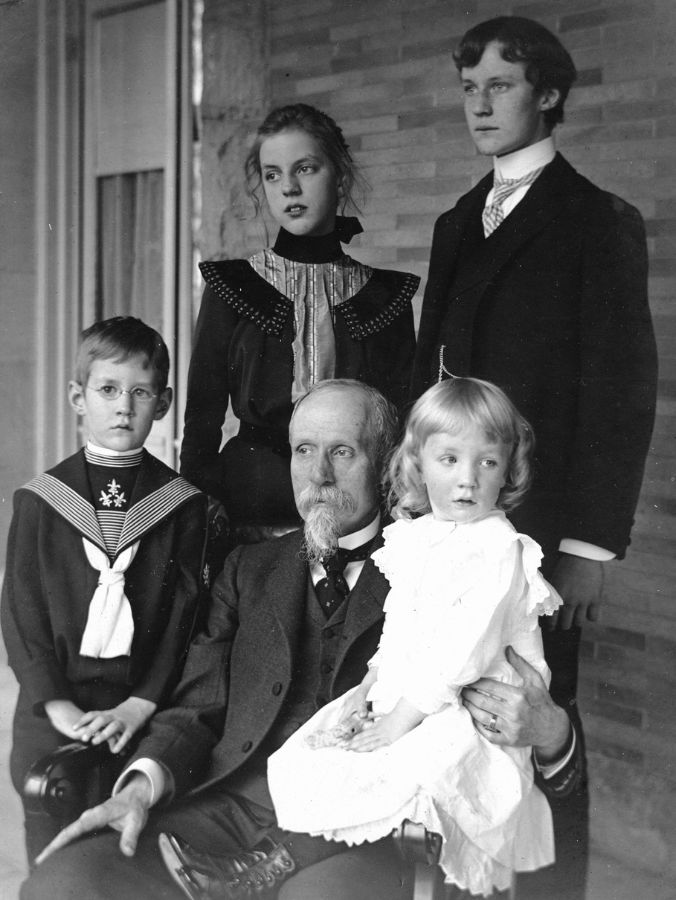-
Who We Are
Who We Are
For the last century, we’ve dedicated ourselves to empowering families like yours to prosper and endure. Like many of the leading families we serve, we have been through our own wealth journey.
Discover Pitcairn -
What We Do
Wealth Momentum®
The families we serve and the relationships we have with them are at the center of everything we do. Our proprietary Wealth Momentum® model harnesses the most powerful drivers of financial and family dynamics, maximizing the impact that sustains and grows wealth for generations to come.
Explore - Insights & News

While there are many ways to accomplish your charitable giving goals both during your lifetime and after your death, one of the simplest and most effective ways can be to designate a charitable beneficiary for your individual retirement account, or IRA. Here’s why we often recommend that our clients consider this approach.
Your Non-IRA Assets Are More Than Enough
Before choosing to designate all or part of an IRA to charity, you’ll want to be sure that your non-IRA assets are sufficient to care for your spouse, children, grandchildren, or whomever the important individuals in your life are that you want to provide for.
How do you know what’s enough?
It’s a personal question, and everyone’s answer will be different. The answer depends on what kind of lifestyle you want to support and how long the people you want to support are likely to live. It also depends on what other sources of income you have coming in from your business or investments.
If your other assets comfortably cover your other goals, then your IRA can be an especially attractive vehicle for leaving a legacy.
You Want to Avoid Double Taxation
If your assets are valuable enough to create estate tax liability, then reducing that potential tax bill becomes paramount. Regardless of how you feel about government spending, when you shelter your money from estate taxes, you get to exercise far greater control over who can spend your money and what they can spend it on.
When you leave a traditional or Roth IRA to a non-charitable beneficiary and the IRA is part of your taxable estate, your IRA is first subject to the federal estate tax rate of 40% after the exemption. However, the IRA may not be subject to federal estate tax if the estate is under the exemption amount at death.
If your IRA is a traditional IRA, that’s when the second tax hit comes into play. When the beneficiary — let’s say it’s your adult child — takes required minimum distributions, they’ll pay income taxes on the money, even though it was already nearly halved by the estate tax.
If you name a charitable beneficiary for your IRA, it will be excluded from your estate. It won’t be subject to estate tax, and your designated charity or charities will receive the full value of your IRA. And, as a tax-exempt organization, the charity will not owe any tax when it receives or spends your IRA funds.
Tax Laws Make Other Assets a Better Choice for Heirs
Assets such as stocks held in non-retirement accounts can be a far more tax-efficient way to leave money to heirs than a traditional IRA.
Let’s say you own 100,000 shares of some company’s stock. The shares were worth $10 each ($1 million total) when you acquired them many years ago. They’re now worth $200 each, or $20 million. If you sold all your shares, you’d owe long-term capital gains tax on $19 million because your cost basis could be $1 million.
Estate-tax complexities aside, if you left your shares to your heirs, their cost basis would be $20 million, because stocks receive a step-up in basis at death. The new owner’s cost basis is whatever the stocks were worth when the original owner died. This step-up in basis also applies to real estate. Your heirs could immediately sell these assets and owe no federal income tax.
It’s Easy
Changing your IRA beneficiary is as simple as adding or updating a transfer-on-death designation for your account. You can often complete this process online in a few minutes by logging into your brokerage account.
The only extra step you might encounter in this process is obtaining a spousal waiver. If you’re married and you live in a community property state, your spouse will need to sign a waiver agreeing not to inherit your IRA. Some brokerage firms may recommend that you obtain a spousal waiver even if you don’t live in a community property state.
Accounts with transfer-on-death beneficiary designations are not governed by your will and do not pass through probate, keeping your transfer private and avoiding probate fees.
It’s Flexible
You don’t have to leave 100% of your IRA to a single charity; you can designate multiple beneficiaries. If you want to leave 50% to your best friend and divide the remaining 50% among your five favorite charities, you can.
If you change your mind at any point, you only need to fill out a new transfer on death designation form expressing your new wishes. If your fortune (or estate tax law) changes, you can remove the charitable beneficiaries and leave your entire IRA to your spouse or another family member. The choice is yours, and you don’t have to go through an attorney to make it.






